The best 8 sightseeing places in Havana that you can not miss

Planning a trip to Havana means diving into the world of our vibrant culture, rich history, and undeniable contradictions. Amidst the many activities competing for your attention, one experience stands out as quintessential: sightseeing. As a born and bred Havanero, I've roamed every corner of this dynamic city and compiled a list of the top 8 must-see spots. From well-known landmarks to hidden gems, you can't simply skip visiting any of them, trust me. So, let's skip the fluff and dive straight into the best sightseeing locations this city has to offer.
1. Capitolio


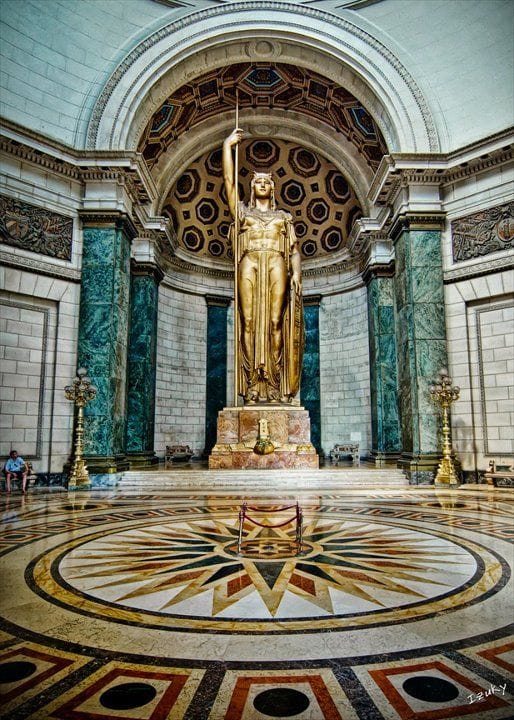



Capitolio - Havana
The National Capitol Building of Havana stands as a testament to Cuba's rich history and architectural grandeur. Constructed in 1929 under the guidance of architect Eugenio Raynieri Piedra and commissioned by then-Cuban President Gerardo Machado, the Capitolio was intended to house the two chambers of the Congress, serving as the legislative body of the Republic of Cuba. Drawing inspiration from iconic structures such as the Pantheon in Paris, St. Paul's Cathedral in London, and the United States Capitol, the building boasts a neoclassical colonnaded façade and a dome soaring to a height of 91.73 meters.
After the Revolution, the congress was dissolved and the building became the headquarters of the Cuban Academy of Sciences. Following extensive restoration in 2010 to restore its original structure and ambiance, it has once again become the seat of the Cuban parliament since 2015. Open to the public, the Capitolio has become one of the most visited tourist attractions in the city, hailed as an architectural icon of Havana and often regarded as the city's most imposing edifice. Its significance extends beyond aesthetics, symbolizing Cuba's enduring spirit and resilience.
Surrounding the Capitolio are meticulously landscaped gardens and parks covered with Royal Palm trees, symbols of the Cuban nation.
The Capitolio Nacional de La Habana stands as a symbol of the city's rich heritage and architectural prowess, ranking among the world's most significant palaces. Its timeless elegance and historical significance make it a must-visit destination for tourists and locals alike, offering a glimpse into Cuba's storied past and vibrant present.
2. Parque Central
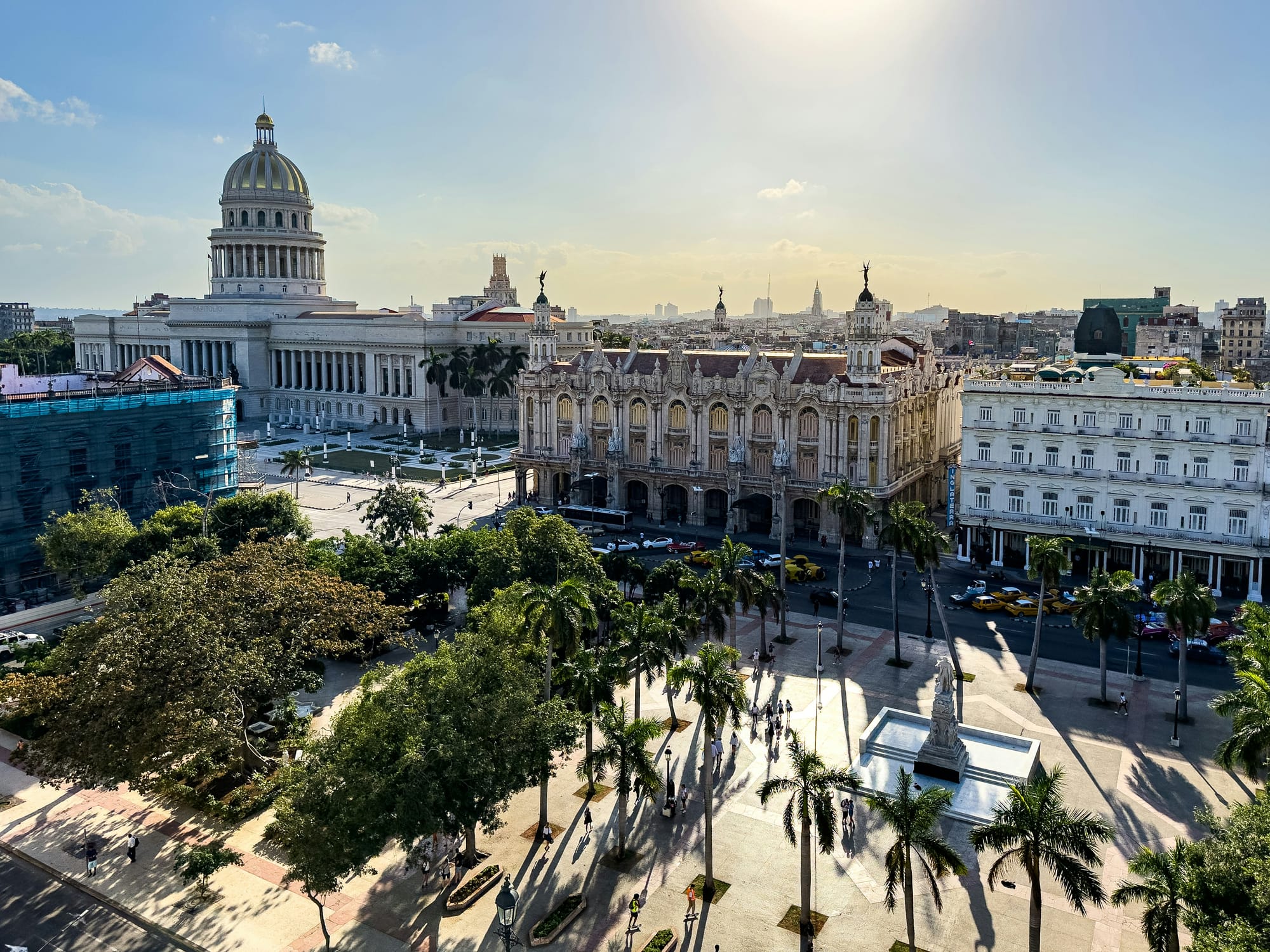





Parque Central - Havana
The Central Park of Havana was completed after the walls of the old city were finally dismantled in the year 1877. At that time, Cuba was still under Spanish rule, and the first statue erected was one of Queen Isabel II of Spain. Following the end of colonial rule in 1902, the statue of the queen was replaced by a temporary statue representing Liberty. Finally, in 1905, the first-ever statue of José Martí, Cuba's national hero, was placed in the center of the Park and remains there to this day.
Surrounding the monument are 28 Royal Palms, symbolizing the Apostle's birth date. The Royal Palm holds significant national importance in Cuba and serves as a cherished symbol for its people. Additionally, there are 8 symbolic coffins, paying tribute to 8 medicine students executed for treason in 1871 during the Ten Years' War.
The park is flanked by several important buildings. The Great Theater of Havana, home to the national Cuban Ballet and the site where President Obama delivered his speech during his visit to Havana, stands prominently nearby. Adjacent to the National Ballet, separated by the beginning of San Rafael's "callejón," is the "Hotel Inglaterra," which holds the distinction of being the first hotel built in Cuba, erected in 1875. But I'll save more about it for another post. 😉
Central Park stands as a landmark of immense significance for Cubans, unquestionably a destination not to be missed.
3. Paseo del Prado



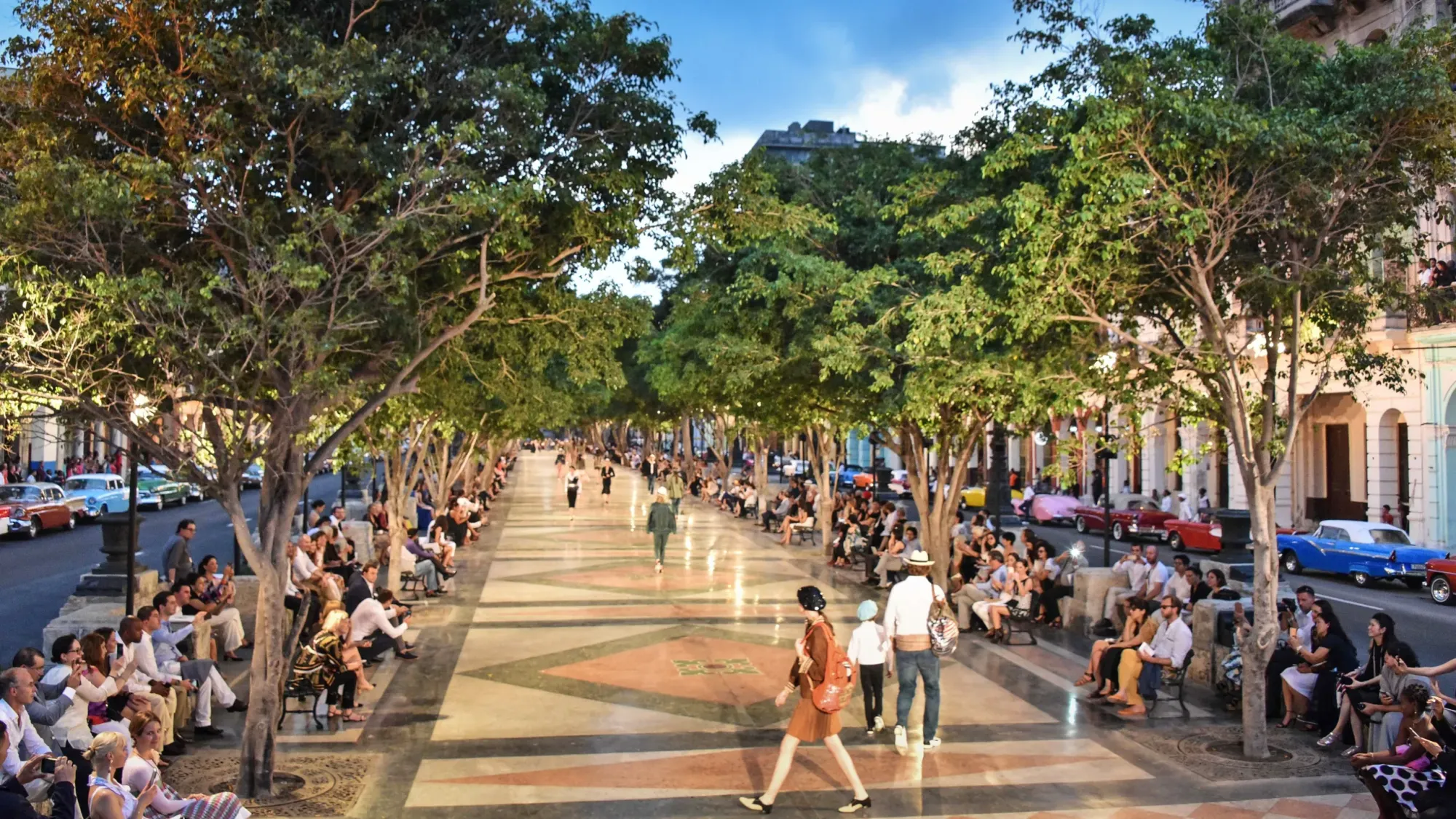
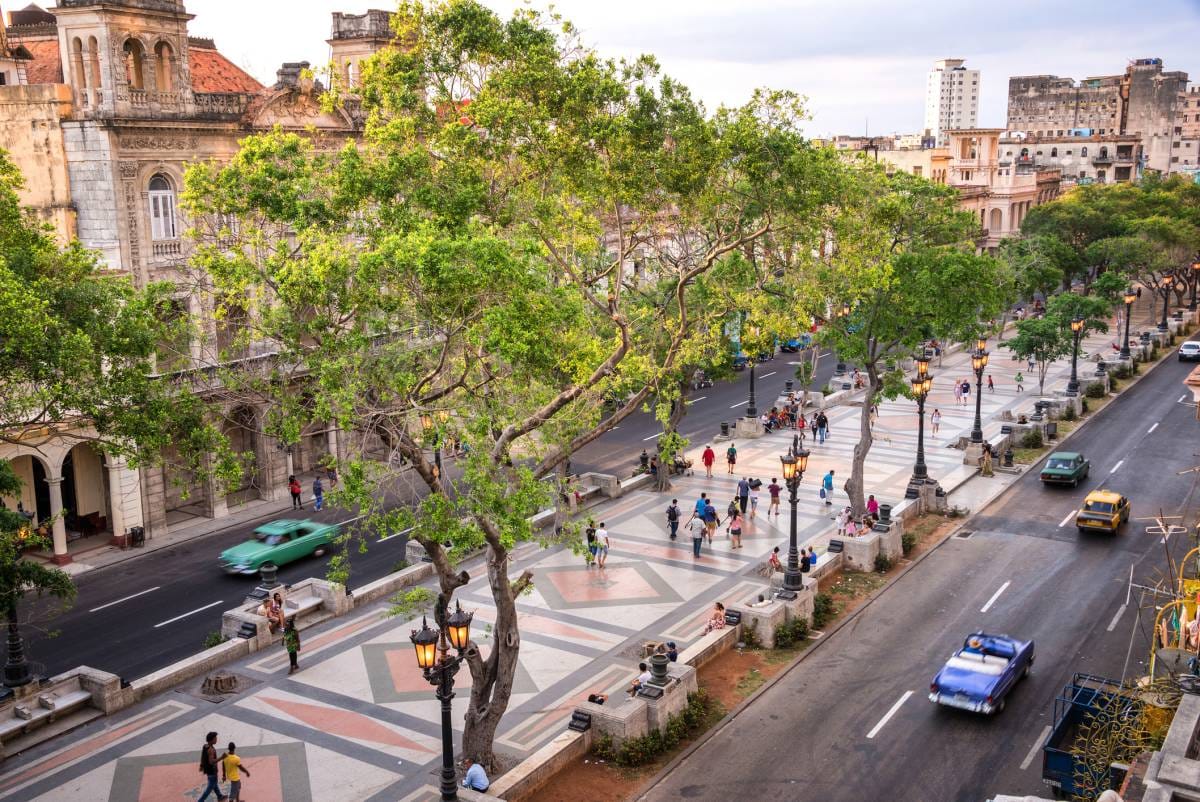

Paseo del prado
Paseo del Prado, located in Havana, Cuba, is a historic street and promenade that serves as a cultural and architectural landmark. Originally proposed in 1770 and completed in the mid-1830s, it was redesigned in 1925 by French landscape architect Jean-Claude Nicolas Forestier, who added trees, sculptures, walls, and benches. The boulevard is adorned with significant buildings like the Gran Teatro de La Habana and hotels, showcasing architectural styles from Madrid, Paris, and Vienna. El Prado, as it's commonly known, was the first paved street in Havana. However, the construction of El Capitolio in 1929 resulted in a section of the promenade being removed.
Jean-Claude Nicolas Forestier played a crucial role in Havana's urban planning, aiming to harmonize classical forms with the tropical landscape. His vision included a network of parks, avenues, and boulevards, but many of his ideas were curtailed by the Great Depression. Over time, the deterioration of Paseo del Prado began, accelerated by the population shift away from the area in the 1950s and further exacerbated by neglect following the 1959 revolution. Today, many buildings along the promenade remain in a ruined state, reflecting its decline over the years. Despite its deterioration, Paseo del Prado stands as a testament to Havana's rich history and architectural heritage, representing both its past grandeur and its present challenges in preservation and restoration.
4. La Punta and Monument to the Medicine Students


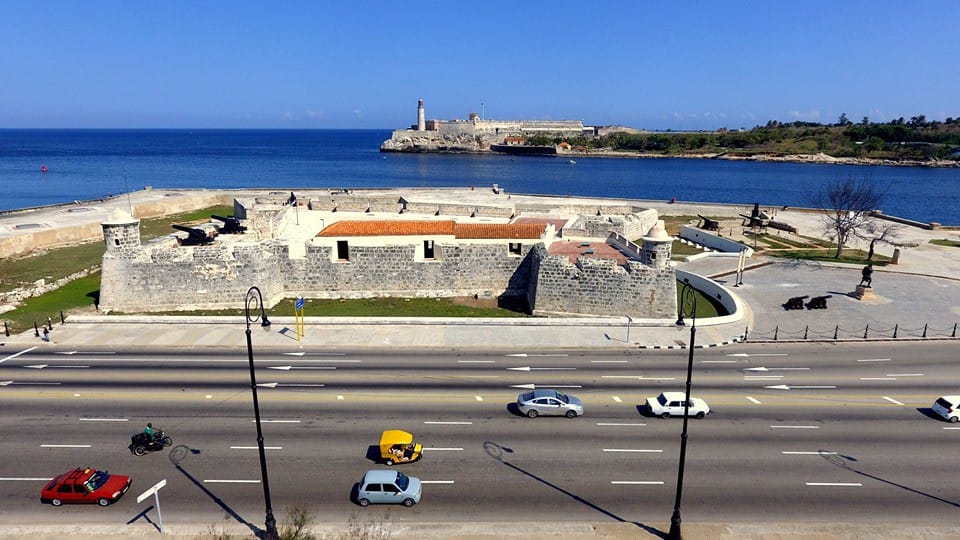
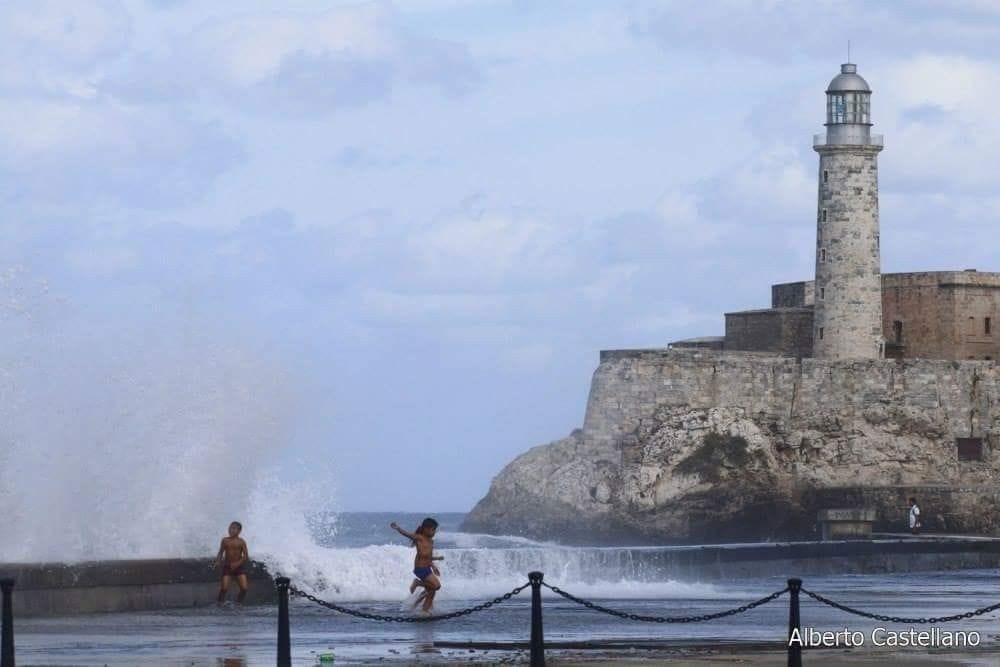


Fortaleza de La Punta y monument to The Medicine Students
At the north end of Paseo del Prado, we encounter La Punta. Like El Morro, it was strategically designed to protect Havana from frequent corsair attacks. Initially, lookouts were stationed there in 1559, but significant fortification efforts began in 1582 under the orders of King Philip II of Spain. Juan de Tejeda and Italian engineer Giovanni Battista Antonelli oversaw the construction, which faced delays and damage due to a hurricane in 1595. By 1602, La Punta was transformed into a fortress with several artillery pieces. Over time, the fortress underwent various modifications and repairs, including the laying of a heavy copper chain between La Punta and El Morro in 1630 for increased bay protection.
In 1762, during the British expedition against Cuba, La Punta suffered substantial damage, necessitating repairs and enhancements when Spanish control was restored. Notably, in the 19th century, additional changes were made to strengthen the fortification system, including the construction of esplanades to accommodate more artillery pieces. La Punta also holds historical significance as the site where, in 1851, the Spanish executed several prisoners, including Venezuelan adventurer Narciso López, sparking outrage in the United States.
Adjacent to La Punta lies the Monument to the 8 Medicine Students, situated in a park within Plaza de La Punta in Old Havana. Inaugurated in 1890, the monument commemorates eight medical students who were wrongfully executed in 1871 after being falsely accused of desecrating the tomb of a Spanish journalist. Fermín Valdés Domínguez spearheaded efforts to prove the students' innocence and secure funds for the monument's construction. Designed as a Greek-style temple enclosing the execution site, the monument features a marble plaque marking the innocence of the victims, an urn purportedly containing their remains, and symbolic sculptures representing justice and innocence. Every year on November 27th, Cuban youth gather at the monument to pay tribute to the students' sacrifice and honor their memory.
4. Avenida del Puerto






Avenida del Puerto - Havana
Avenida del Puerto starts from La Punta and extends along the coastline of Old Havana, encompassing various historical landmarks and points of interest. Initially named Avenida del Golfo, construction began in 1927, reclaiming over 128,000 square meters of land from the sea. This ambitious project was part of a broader public works initiative under Gerardo Machado's administration, aimed at enhancing Havana's infrastructure.
Throughout its history, Avenida del Puerto has undergone significant transformations, including the rectification and widening of adjacent streets. In the mid-20th century, additional projects, such as completing the Malecón wall and constructing a naval pier, further shaped the avenue's landscape. In recent years, efforts led by the Office of the Historian of the City of Havana have revitalized key landmarks along the avenue, such as the San José Warehouses, now repurposed for artistic and cultural activities.
Among the notable sites along Avenida del Puerto are the Alameda de Paula, the Castillo de la Real Fuerza, and the Lonja del Comercio. The Alameda, Havana's first waterfront promenade, dates back to 1777 and has undergone several renovations over the centuries. The Castillo de la Real Fuerza, built in the 16th century, stands as a testament to Havana's colonial history and resilience. Lastly, the Lonja del Comercio, a striking example of Renaissance architecture, has been repurposed as a modern office complex, showcasing the city's blend of historical preservation and contemporary development efforts.
5. Malecon






Malecón - Havana
The Malecón, officially known as Avenida de Maceo, is an iconic 8 km (5 miles) esplanade, roadway, and seawall that runs along the coastline of Havana. Technically, it includes part of the Avenida del Puerto and stretches beyond La Punta to the west until the mouth of Almendares River. Construction of the Malecón began in 1901 under temporary U.S. military rule, with the primary aim of protecting Havana from the sea. Over the years, subsequent Cuban governments extended its reach, with significant sections completed by 1923, stretching from Old Havana to the mouth of the Almendares River in Vedado.
Despite its historical significance and architectural beauty, many of the houses lining the Malecón have fallen into disrepair. Nevertheless, it remains one of Havana's most spectacular and beloved destinations, attracting locals and tourists alike.
The Malecón is adorned with numerous monuments and landmarks, including tributes to General Máximo Gomez, Antonio Maceo, General Calixto García, and the victims of the USS Maine. Notable buildings and features along the Malecón include the Castillo de la Real Fuerza, Castillo de San Salvador de la Punta, Malecón 17 (Las Cariátides), and the Hotel Nacional. Additionally, the Malecón holds cultural significance, serving as an inspiration for various cocktail names and remaining a vibrant hub of activity and leisure for both residents and visitors.
6. Havana's University



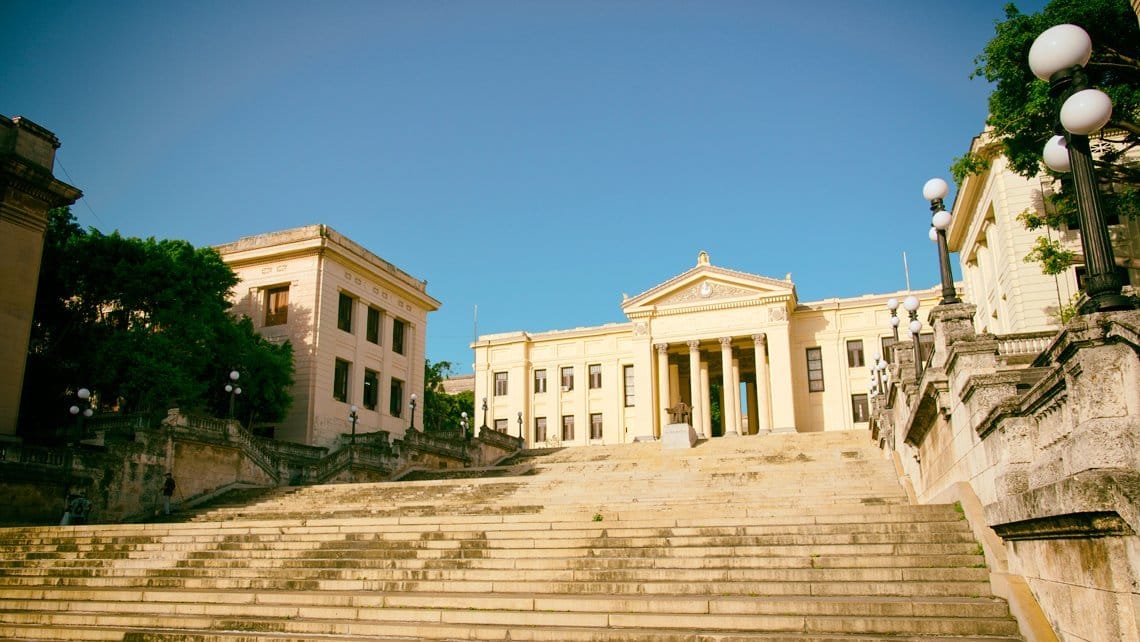


The University of Havana, established on January 5, 1728, stands as the oldest institution of its kind in Cuba and one of the earliest in the Americas. Originally founded by Dominican friars as the Royal and Pontifical University of Saint Jerome of Havana, it evolved over the years into a secular, royal, and literary institution before adopting its current name. Situated in the Vedado district of Havana, the university's historic campus comprises several buildings and gardens, with its grand staircases serving as a quintessential symbol of the city.
Renowned for its neoclassical architecture and rich history, the University of Havana has been a witness to key moments in Cuban and Havana's history. Notable figures such as Félix Varela, Enrique José Varona, and even Fidel Castro himself once walked its halls. The university's staircases, notably, have been a focal point for student demonstrations during the Batista dictatorships, reflecting its role as a site of activism and dissent.
The centerpiece of the campus is the Aula Magna, the university's oldest building constructed in 1902. Here lies the final resting place of Félix Varela, a prominent Cuban thinker and one of the university's most distinguished alumni. The Aula Magna's interiors, adorned by artist Armando Menocal, stand as a testament to the university's cultural and intellectual heritage. Another notable spot is the Plaza Ignacio Agramonte, featuring a tank captured by student rebel troops in 1958, showcasing the university's connection to revolutionary history.
Exploring the university's gardens, visitors encounter the Garden of Fame, adorned with busts of notable Cuban figures. Known humorously among students as the "Parque de los Cabezones" (Park of the Big Heads), this area earned its nickname due to a supposed error in proportion by the French artist responsible for the busts. Despite this whimsical anecdote, the University of Havana remains a beacon of learning and a cherished cultural landmark in the heart of Vedado, inviting visitors to immerse themselves in its history and vibrant atmosphere. It remains an important and prestigious research center.
7. Avenida de los presidents






The Avenida de los Presidentes, also known as G Street, is a prominent artery in Vedado, Havana, stretching from Carlos III to the Malecón. This street, intersected by important avenues such as 23, 17, and Linea, is a lively fusion of vehicles and pedestrians, with green areas and benches inviting rest and contemplation.
However, the most notable aspect of G Street is its role as an open-air museum, honoring presidents and Latin American leaders with a series of monuments. At the top of the intersection with 29th Street stands the impressive complex dedicated to José Miguel Gómez, featuring a bronze statue of the former Cuban president surrounded by ornamental elements of granite and marble.
Descending down the avenue, visitors encounter the Café Presidente, a cozy spot to enjoy a refreshing drink or coffee. Further along, there are monuments dedicated to leaders such as Salvador Allende of Chile and Omar Torrijos of Panama, each with their own story and significance.
The Avenida de los Presidentes also hosts monuments dedicated to figures like Benito Juárez of Mexico, Eloy Alfaro of Ecuador, and Simón Bolívar of Venezuela. These sculptures, although they have changed over time and have been the subject of controversy, still bear witness to the history and culture of the region.
Although some monuments have been removed or relocated, the Avenida de los Presidentes remains an important landmark in Havana, evoking the rich political and cultural heritage of Cuba and Latin America. Originally, the avenue was intended to pay tribute to elected presidents with sculptural monuments, as part of a broader initiative to commemorate the heroes of independence and affirm the new path of progress in the early years of the Republic.
8. Revolution Square (Civic Square) and José Martí Memorial
The Plaza de la Revolución, formerly known as Plaza Cívica until 1959, is a public square located in the city of Havana, Cuba. It is one of the largest squares in the world, covering 72,000 square meters, and serves as a venue for various events, from memorials to graduations. It was a platform for many of Fidel Castro's speeches.
The project was conceived by a French architect in 1926 by request of the Minister of Public Works and was inspired by Paris-style monuments which are located at the convergence of many important avenues. The works only started in 1953, during Fulgencio Batista's regime with the name of Plaza Cívica, but its international fame began with the Cuban Revolution. The square features the José Martí Monument, sculpted by Juan José Sicre, and facing it is the Ministry of the Interior with the iconic image of Che Guevara, captured by photographer Alberto Korda and sculpted by Enrique Ávila. In 2009, another work by the same artist, dedicated to Camilo Cienfuegos, was inaugurated at the Ministry of Communications headquarters.
Located in the municipality known as Plaza de la Revolución, between the intersection of Paseo and Rancho Boyeros avenues, the square houses the José Martí Monument, honoring the Cuban poet and thinker.
The José Martí Monument, standing at 112.75 meters to the top of the tower and 141.995 meters to the beacons and flags, is the tallest point in Havana. It features a museum at its base, showcasing seventy-nine of Martí's thoughts engraved in gold letters, distributed across five halls. The monument also offers panoramic views of Havana and marks distances to various international capitals and domestic locations.
The square serves as a gathering place for the people during significant events, such as May Day marches, and has hosted historic gatherings, including speeches by Fidel Castro.
The Plaza de la Revolución has gained fame over the years and is frequently visited by tourists eager to photograph themselves in front of the iconic image of Che Guevara. Despite its original purpose, it has become a symbol of the Cuban Revolution and stands as a marvel of Cuban architecture. If you're in Havana, it's worth a visit to witness this architectural wonder firsthand.
Conclusion
If you are visiting Havana, these are the places you can not skip a visit to, due to their significance in Cuban history and the interesting facts embedded in their history. Most of them also offer the possibility to enjoy a relaxed moment with spectacular views of the City.